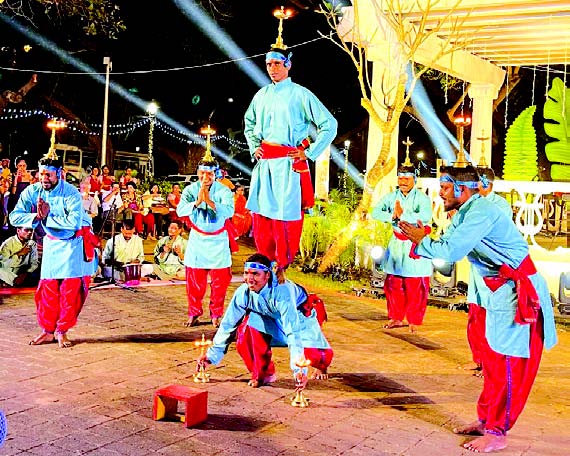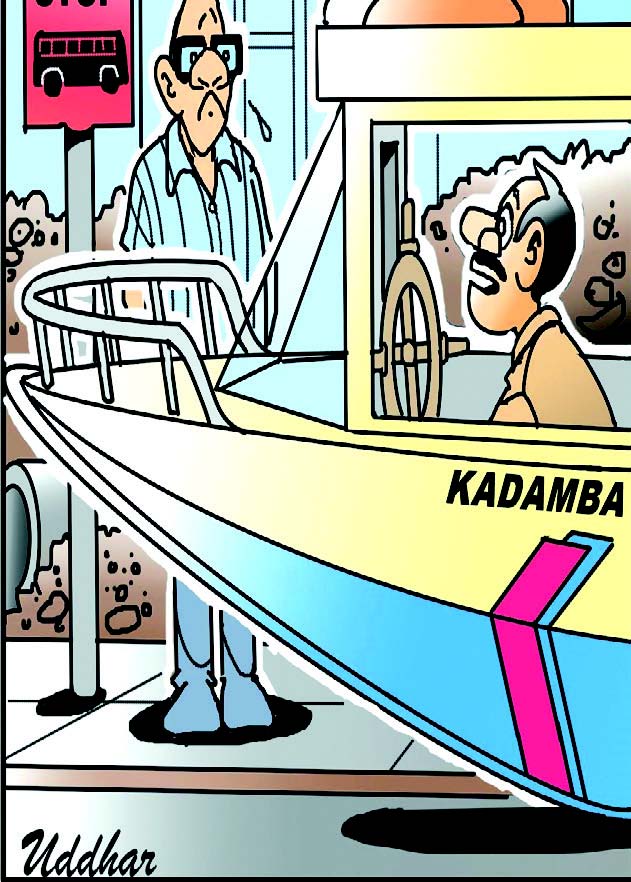
Team Cafe
Shigmo, a festival deeply rooted in the cultural fabric of the state, is a celebration of life, tradition, and spirituality. The sounds of dhol, tashe
and kasale are set free to celebrate the season of Spring with songs and colours and will be reverberating across the state for the annual Shigmo celebration. The annual parades of Shigmo will be making their way to the centres of Goa. Shigmo marks the beginning of the spring festival and the end of the winter season. People of Goa celebrate it with colours, folk music and dance. Central to this annual extravaganza are the traditional dances that encapsulate the essence of Goan heritage and showcase the rich tapestry of its diverse communities. Among these dances are the Goff, Dhangar dance, Ghodemodni, Samayi dance, and Morulo dance, each offering a unique glimpse into the cultural mosaic of Goa.
Goff: The Goff dance annually showcased by the Goan peasant communities in Canacona, Sanguem, and Quepem talukas during the renowned Shigmo festival, is a spirited folk performance that embodies the joy and contentment of the people following a successful harvest during the Phalgun month.
During the dance, participants hold colorful cords attached to the center point of the performance area, known as the ‘mand,’ and intricately move in sync with one another, creating a mesmerizing, multicolored braid by the end of the first sequence. As the music resumes, the dancers skillfully reverse their movements, unraveling the braid to return all cords to their individual, loose state by the conclusion of the second sequence.
Dhangar Dance: The Dhangar Dance, a renowned traditional dance of Goa, is performed by the shepherd community known as Dhangars. Also referred to as the Dhangari Gaja Dance, it holds significance as a dance, with practitioners seeking blessings from the folk god ‘Bira Deva.’
Performers put on traditional Marathi attire, including a Kathiawari-styled white dress and a turban adorned with colorful handkerchiefs. The dance commences with gentle footwork, synchronized to the slow rhythm of the ‘Dhol.’ Typically, dancers encircle the dhol players as they move gracefully to the beat.
Ghodemodni: The Ghode Modni, or ‘horse dance,’ is a distinctive festival observed in villages like Thane, Sattari, Bicholim and other locales. This age-old tradition features an impressive showcase of equestrian skills and martial arts, where participants, dressed as warriors, skillfully ride adorned horses. The rhythmic cadence of hooves, coupled with the vibrant attire of the performers, creates a captivating spectacle that enthralls onlookers.
Emerging as a prominent feature of the Shigmo festival, celebrated during Goa’s harvest season, the Ghode Modni folk dance holds significant cultural importance. Linguistically, ‘ghode’ translates to ‘horse,’ while ‘modni’ denotes ‘joyful,’ encapsulating the jubilant spirit of the performance. This centuries-old tradition not only pays homage to Goan heritage but also serves as a testament to the enduring bond between humans and horses in rural life.
Samayi Dance: The Samayi dance is a cherished tradition among the people of the community, where participants showcase their skill and grace while balancing traditional metallic lamps, known as ‘diwli,’ atop their heads. These intricately crafted diwlis, add a touch of authenticity to the performance.
Both men and women partake in this cultural extravaganza, adorning their heads with these Goan handicrafts as they move in harmony with the melodic tunes of folk instruments. The rhythmic beats of the Ghumat, Samel, Zanj, Shehnai, and Surt set the pace for the dancers, guiding their movements and infusing the atmosphere with an aura of festivity and tradition.
Morulo Dance: The Morulo dance depicts the movements of a peacock, performed during the Shigmo. Dancers, adorned in eclectic costumes, move with agility and precision, exuding a sense of joy and celebration that reverberates throughout the community. In essence, the traditional dances of Shigmo serve as a testament to the enduring legacy of Goan culture, celebrating its vibrant traditions, communal spirit, and artistic ingenuity. As custodians of this cultural heritage, it is imperative to cherish and preserve these age-old traditions, ensuring that future generations continue to revel in the splendor of Shigmo’s cultural extravaganza for years to come.
